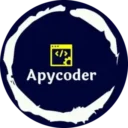Introduction
Hey everyone, Asif Khan here! If you’re into Python, OpenCV, and computer vision, you probably love working on real-time applications. One exciting area is IoT-based real-time applications that allow you to control devices remotely. Whether you’re working on IoT automation, robotics, or smart home projects, choosing the right Python web framework is essential for smooth real-time interactions.
In this blog, I’ll walk you through the top Python web frameworks that are best suited for real-time IoT applications where you can control devices efficiently. Let’s get started!
1. FastAPI – The High-Performance API Framework
If speed and real-time communication are your priorities, FastAPI is one of the best choices. It is built on Starlette and Pydantic, making it ultra-fast and efficient.
Why Use FastAPI for Real-Time IoT Applications?
- Asynchronous support: Handles WebSockets for real-time device communication.
- Auto-generated API documentation: Saves development time.
- Lightweight and fast: Perfect for IoT-based applications.
✅ Best For: High-performance real-time applications where devices need quick responses.
2. Flask + Flask-SocketIO – Simple Yet Powerful
Flask is a micro web framework, but when combined with Flask-SocketIO, it becomes a strong contender for real-time applications.
Why Use Flask for IoT-Based Control Applications?
- Easy WebSocket implementation for real-time communication.
- Lightweight and simple to integrate with Python-based automation tools.
- Huge community support for beginners.
✅ Best For: Small-scale real-time applications where ease of use is a priority.
3. Django + Django Channels – The Scalable Giant
Django is a full-stack framework, but if you need real-time communication, Django Channels extends its capabilities.
Why Use Django for IoT-Based Device Control?
- Built-in WebSockets support via Django Channels.
- Security features like authentication and permissions for controlling devices.
- Scalability for large applications.
✅ Best For: Enterprise-level applications with high security and scalability needs.
4. Sanic – Async-First and Super Fast
Sanic is an asynchronous framework designed for speed. If you’re looking for something even faster than Flask, Sanic is a great option.
Why Use Sanic for Real-Time Applications?
- Built-in WebSockets support for IoT communication.
- Fast execution speeds with async capabilities.
- Minimal overhead, making it ideal for IoT devices.
✅ Best For: Low-latency real-time communication with devices.
5. Tornado – The Real-Time Beast
Tornado is a high-performance Python framework known for handling thousands of concurrent connections efficiently. It was built for real-time web applications, making it an excellent choice for IoT applications.
Why Use Tornado?
- Asynchronous networking for handling multiple devices at once.
- WebSockets support out of the box.
- Proven track record in real-time messaging applications.
✅ Best For: Large-scale applications that require handling multiple device connections simultaneously.
6. Solara – Interactive Web Apps with Python
Solara is a relatively new but powerful framework that allows you to build interactive web applications using Python, similar to Streamlit.
Why Use Solara for IoT Applications?
- Reactive programming allows real-time updates with minimal effort.
- Compatible with Jupyter Notebooks for quick prototyping.
- Simple Python-based UI development.
✅ Best For: Creating interactive dashboards and control panels for IoT devices.
7. Streamlit – Quick and Easy Web Apps for IoT
Streamlit is another powerful framework that allows you to create web applications with just a few lines of Python code.
Why Use Streamlit for IoT Applications?
- Minimal coding required to build beautiful UIs.
- Fast prototyping for real-time monitoring dashboards.
- Integration with data visualization tools for IoT analytics.
✅ Best For: Building simple, real-time control dashboards for IoT devices.
Conclusion
When building a real-time IoT application for controlling devices, choosing the right Python web framework depends on your needs:
- For speed and performance → Go with FastAPI.
- For simplicity and ease → Use Flask + Flask-SocketIO.
- For scalability → Pick Django + Django Channels.
- For async-first development → Sanic is a great choice.
- For handling thousands of connections → Tornado is unbeatable.
- For interactive dashboards → Try Solara.
- For quick UI development → Use Streamlit.
Each of these frameworks brings something unique to the table, so choose based on your project’s scale, speed, and real-time communication needs.
Let me know in the comments which framework you prefer! Also, check out my YouTube channel and blog for more tutorials on Python, OpenCV, and real-time applications. 🚀🔥
Happy Coding!
📌 Follow me for more updates:
